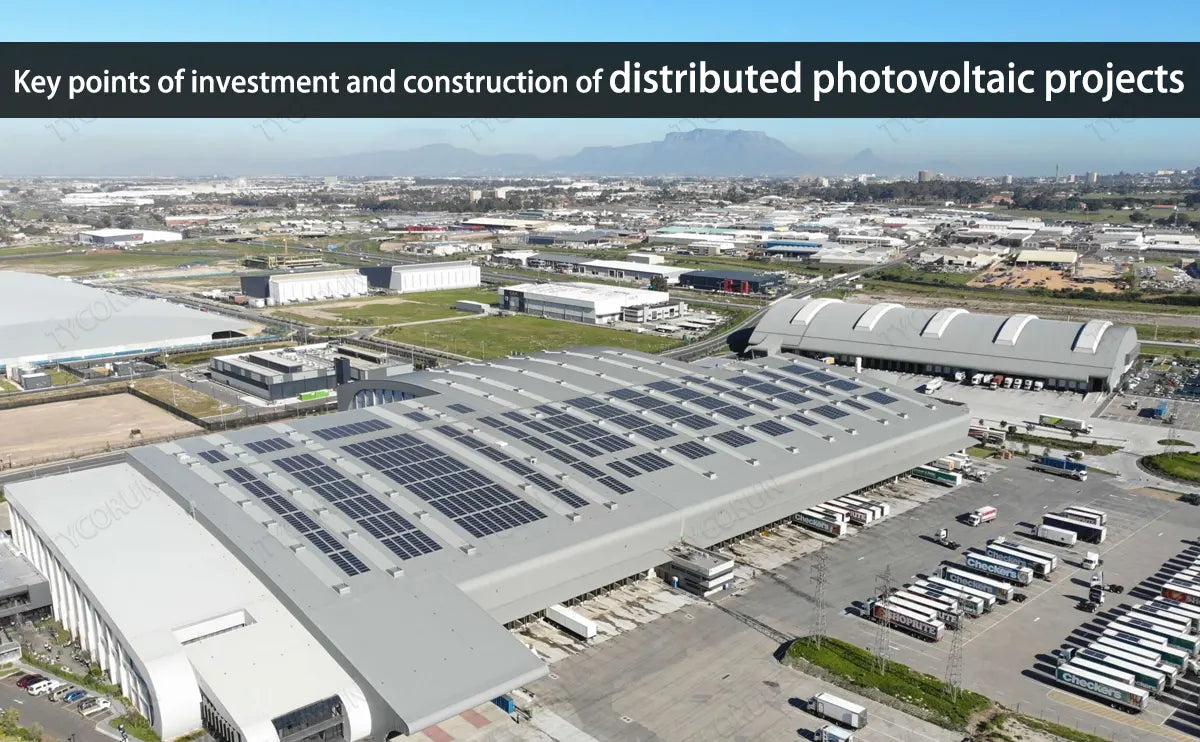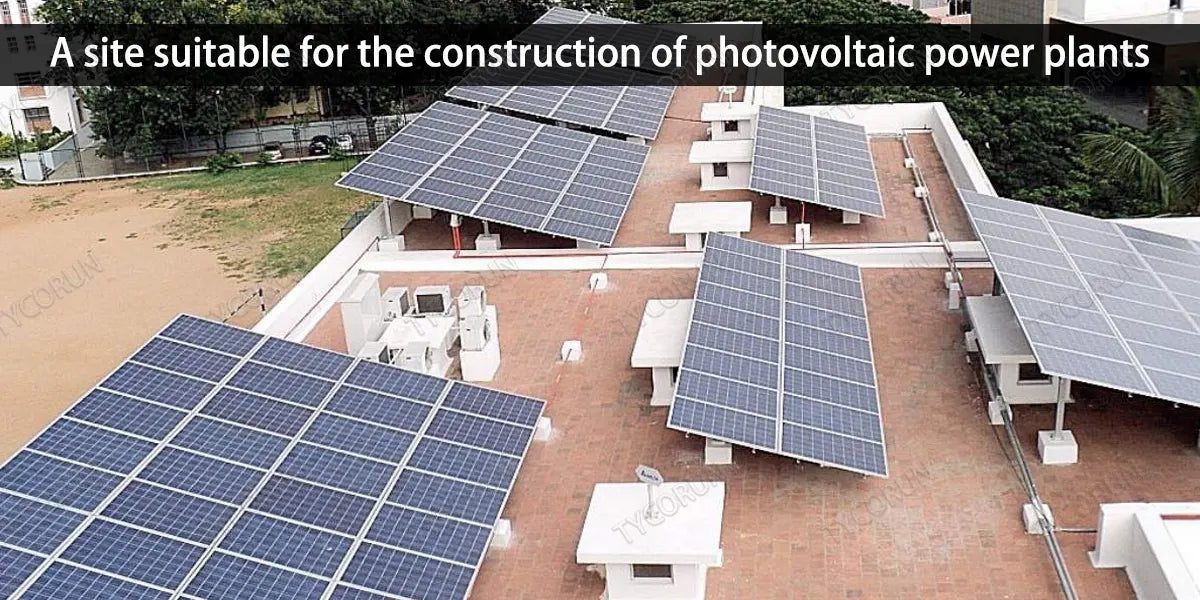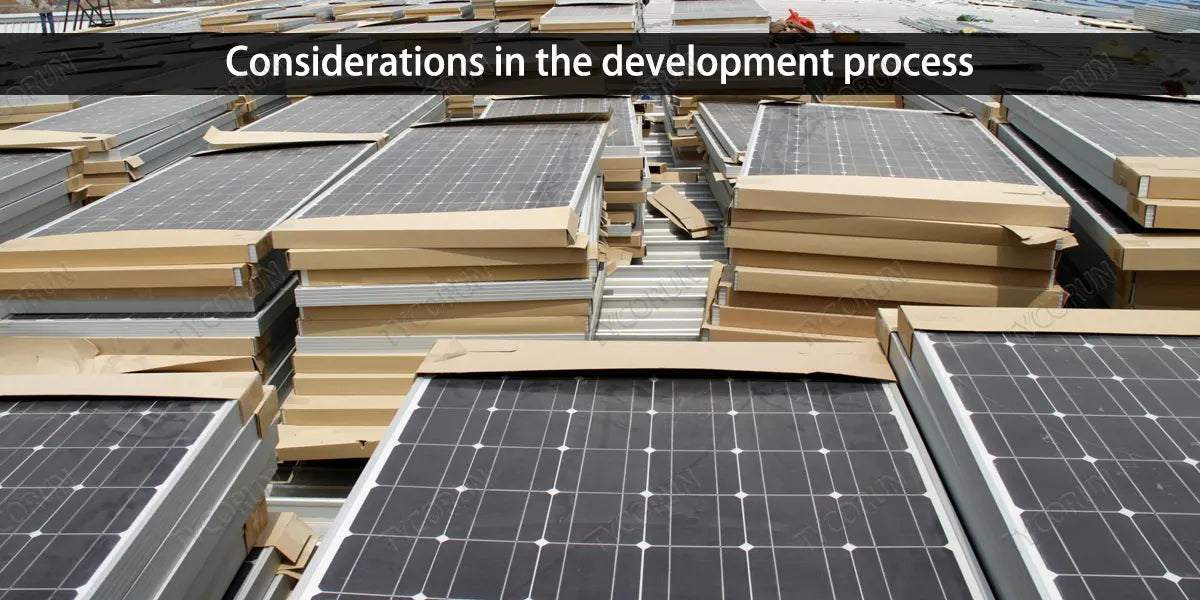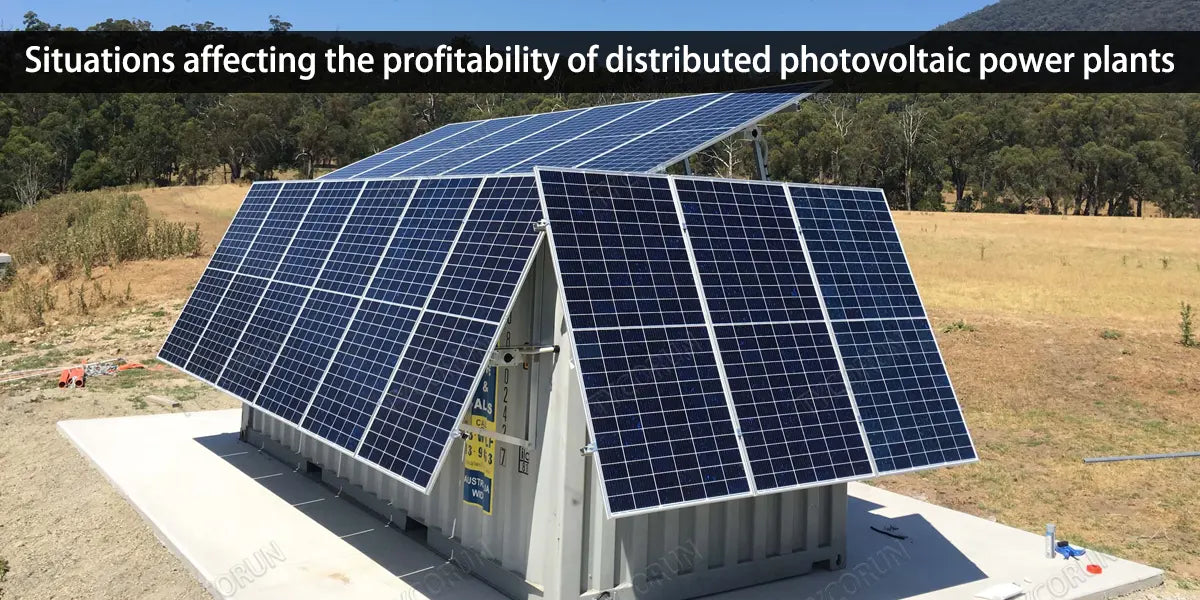
Main content:
1. The form of electricity sales of photovoltaic
For distributed pv system that use building roofs and auxiliary sites to build. There are two ways to sell electricity on the grid of distributed photovoltaic power plants: one way is to choose spontaneous self-consumption, surplus electricity on the Internet, and sign a contract with the roof owner through contract energy management.
The amount of electricity generated will be sold according to the type of residential, industrial and commercial electricity prices, etc. Another way is to choose to go online in full to enjoy the benchmark electricity price of local photovoltaic power plants. At present, there is also a form of distributed photovoltaic electricity sales, that is, partition wall electricity sales.
Selling electricity through the wall is a market-oriented distributed generation transaction. Distributed generation is allowed to sell electricity directly to surrounding home energy storage through the distribution grid, rather than selling it to the grid at a low price and then buying it back from the grid at a high price for the user.
This model can make energy consumers "production investment consumers", and at the same time promote the strategic transformation of power grid enterprises to platform services.
2. A site suitable for the construction of photovoltaic power plants
The selection of the origin of distributed photovoltaic power plants is generally selected for idle roofs or steel structure surfaces. Make the most of the space to make economic gains for idle assets.
● Industrial field plant
Especially in plants with relatively large electricity consumption and expensive online electricity prices, usually the roof area of the plant is large, the roof is open and flat, suitable for the installation of photovoltaic arrays.
And because of the large power load, the distributed photovoltaic grid-connected system can achieve local consumption, offset part of the online purchase of electricity, thereby saving users' electricity bills.
● Commercial buildings
Similar to the effect of industrial parks, the difference is that commercial buildings are mostly cement roofs, which is more conducive to the installation of photovoltaic arrays. However, there are often requirements for architectural aesthetics.
According to the characteristics of commercial buildings, office buildings, hotels, conference centers, resorts and other service industries, user load characteristics are generally higher during the day and lower at night, which can better match the characteristics of photovoltaic power generation.

● Agricultural facilities
Rural areas have a large number of available roofs, including self-owned residential roofs, vegetable sheds, fish ponds, etc., and rural areas often lack the public power grid. Power quality is poor, and the construction of distributed photovoltaic systems in rural areas can improve power security and power quality.
● Municipal and other public buildings
Due to the unified management specifications, the user load and commercial behavior are relatively reliable, and the installation enthusiasm is high, and public buildings such as municipal buildings are also suitable for the centralized continuous construction of distributed photovoltaics.
● Remote farming and pastoral areas and islands
Due to their distance from the grid, off-grid photovoltaic systems or microgrid power generation systems complementary to other energy sources are ideally suited in these areas.
3. Considerations in the development process
The cost of photovoltaic power generation, that is, how much electricity per kWh, cannot be simply analyzed according to the installed cost. It is related to the following factors:
- Installation cost: Different roofing costs are different, and the general concrete roofing installation cost is higher than the color steel tile roofing installation cost.
- Sunshine conditions (annual full load generation time).
- Depreciation years.
- Operation and maintenance costs.

Because each of these factors has its own independent variability, the mutual influence is also very obvious. For example, the same installed cost is placed in different regions, or the same region, the same installed cost, but the investment uses different loan ratios, or uses different depreciation years, etc., will bring completely different photovoltaic power generation cost prices.
In principle, distributed photovoltaic systems do not require much maintenance, and the basic maintenance work is the cleaning of high efficiency solar panels.
4. Situations affecting the profitability of distributed photovoltaic power plants
Rooftop distributed photovoltaic power generation projects are different from ground power station projects, and do not need to go through land, planning and other procedures, but distributed rooftops also have their own characteristics. Such as load, cooperation mode, power load need to be paid attention to when developing the project.
Some situations directly affect the scale of power station construction and generation revenue, and the information to be collected during the preliminary investigation is mainly as follows: Resources, environmental conditions.

The first consideration is the local radiation situation and policy conditions. Photovoltaic power station projects should be developed in locations with high irradiation, less rainy weather and as little pollution as possible. In addition, if the location is close to the sea, anti-corrosion measures must be considered.
Close to the desert, consider increasing the frequency of cleaning or windproof sand. Cold areas need to consider equipment antifreeze measures, etc. It is also necessary to consider the attitude of the local government towards the photovoltaic industry and whether relevant support policies and measures have been introduced.
● Roof condition
- Roof design and service life
The roof area directly determines the capacity of the photovoltaic power generation project, which is the most basic element, and whether there are appurtenances on the roof.
Design to avoid shadow effects. The orientation of the roof determines the layout principle of photovoltaic brackets, modules, tandems, and combiner boxes, such as the roof running east-west, whether the square matrix on the shady side needs to be set at an inclination angle, the different sides of the photovoltaic module are connected in series to avoid interconnection as much as possible,
And the DC input and output of the combiner box and inverter should be the same array facing the roof as possible. Key considerations are roof waterproofing, wind load resistance, roof design load and other factors. The design life of the roof determines the service life of the photovoltaic power plant.
● Roof loads
It is broadly divided into permanent loads and variable loads. Permanent load, also known as constant load, refers to the self-weight of the structure and the dust load. After the photovoltaic plant is installed on the roof, it needs to operate for 20 years, and its own weight is attributed to the constant load.
Therefore, when considering the project at an early stage, it is necessary to focus on the design value of the constant load in the architectural design description. And determine whether to add other loads in addition to the roof's own weight. Such as pipelines, hoisting equipment, roof appendages, etc., and implement whether the constant load has a margin to install photovoltaic power plants.

- Variable loads
Considering the load temporarily applied to the roof under limited conditions, it is divided into wind load, snow load, seismic load, live load, etc., and cannot be occupied. In special cases, live loads can be used as an option to share the PV plant's load, but they must not occupy too much and require specific analysis.
● Number and spacing of buildings
In the same factory area, the more buildings and the larger the spacing, which means that the investment in electrical facilities such as cables, inverters, transformers, etc. increases, which should be taken into account in the evaluation of project investment returns.
Power distribution facilities and grid-connected points Power distribution equipment is one of the bases for selecting grid-connected solutions for photovoltaic power plants, and users with large total transformer capacity and large load ratio are preferred.
● Electricity consumption and electricity prices
The most core of the definition of distributed photovoltaic power generation projects is the proportion of self-consumption of the power generated, so it is necessary to investigate: monthly and daily average electricity consumption, daytime electricity consumption, peak hours and proportions of electricity consumption.
In addition to the above factors, equipment procurement and transportation costs, local labor costs, and difficulties in operation and maintenance during the construction of the power station should also be considered.
5. Solar energy system operation and development mode
The development mode is mainly based on the above information, as well as negotiating with the roof owner to determine the specific cooperation mode of the project, and the current mainstream development mode mainly includes preferential electricity price model, roof leasing model, joint venture model, etc.
Comprehensively consider investment income, owner's willingness and other factors to determine the best investment and development model. In short, a photovoltaic power station is a project that needs long-term operation.
The early development of the project should be considered from a long-term perspective, need to take into account all aspects related to the future operating income of the project, need to do the work in the most meticulous way, through data collection, and finally achieve quantitative analysis, and finally determine whether the project is feasible.
6. Conclusion
The significance is to better promote the absorption of new energy and bring better returns to photovoltaic owners and investors. At the same time, we must see that we must consider the local authority's power policy, which needs to be approved by the power authority to operate.
Related articles: off grid solar batteries, Top 10 photovoltaic battery companies in the world, Top 5 home energy storage companies















